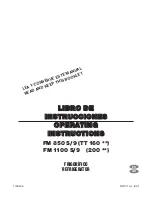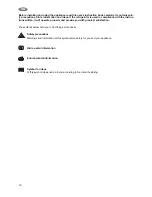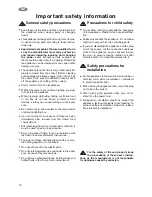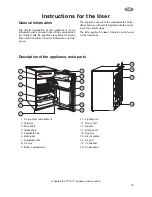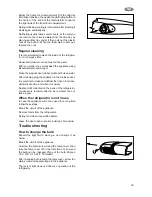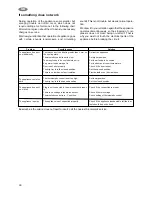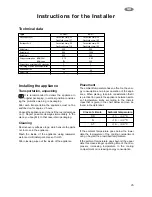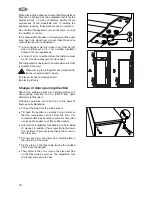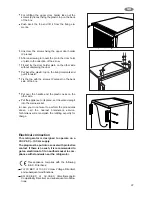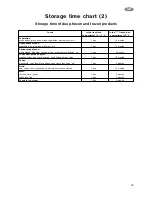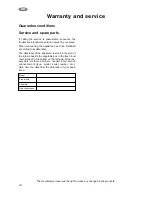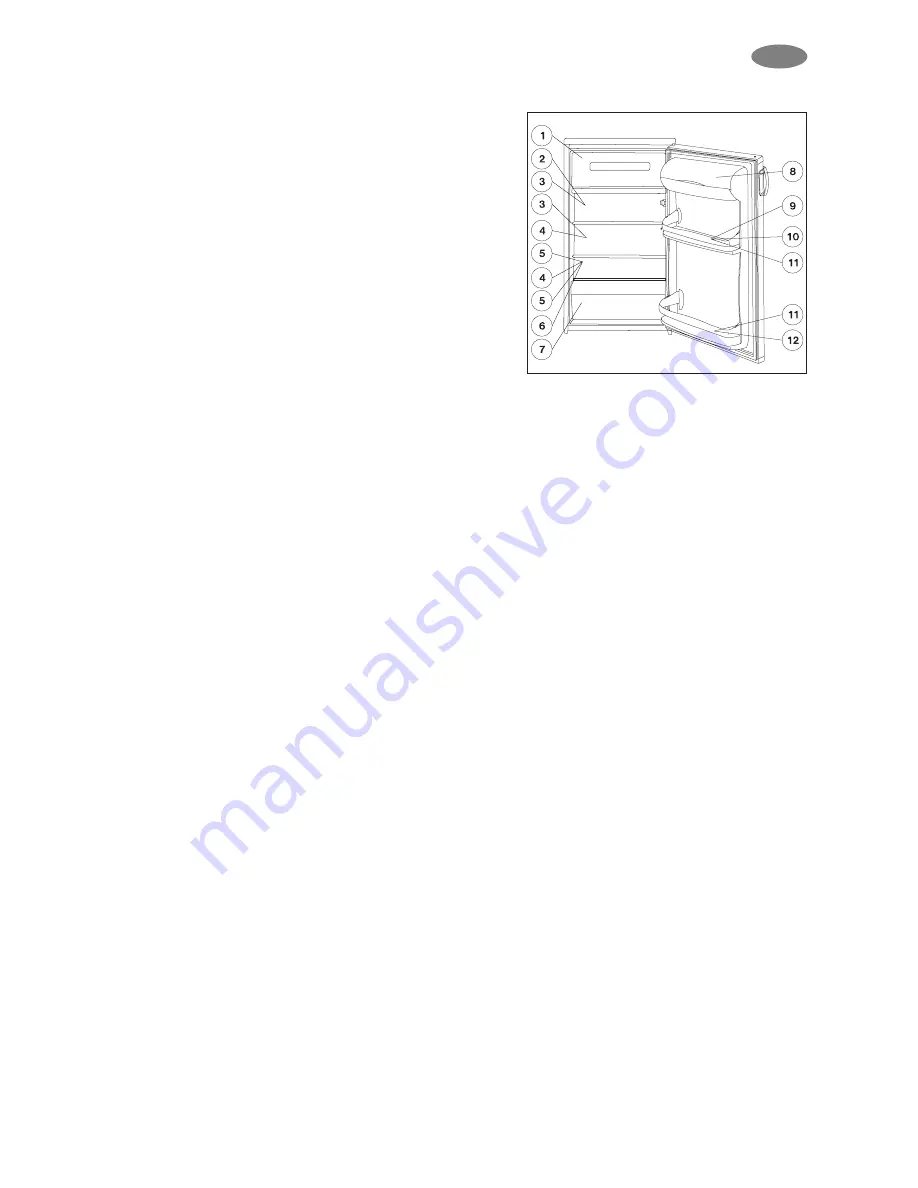
21
Hints for storage
When placing the different kinds of food take into con-
sideration the sketch in figure:
1. Storing frozen foods, making ice and ice-cream.
2. Confectionery, ready-cooked foods
3. Foods in dishes
4. Opened cans
5. Milk, dairy products
6. Fresh meat, cold cuts, sausages, etc.
7. Fruits, vegetables, salads
8. Cheese, butter
9. Eggs
10. Yoghurt, sour cream
11. Small bottles, soft drinks
12. Big bottles, drinks
In figure the TT 160** appliance can be seen.
Storage time and temperature of
foods
The enclosed charts at the end of the user's instruc-
tions give information about storage time in the frozen
and the fresh food compartment.
The storage time can not be determined exactly in
advance, as it depends on the freshness and handling
of the cooled food. That is why the storage time made
known is only informative.
It is safe to store quick-frozen food only that way if they
were not dissolved even for a short time until placing
them into the frozen food compartment.
How to use the two-star frozen food
compartment
The frozen food compartment is separated from the
fresh food compartment by the drip tray.
Depending on the position of the thermostatic control
-12 °C or lower can be kept here.
Smaller quantity of fresh food can be frozen in the two-
star frozen food compartment but storing them for a
longer time is not recommended.
Do not allow warm products placed newly into the
frozen food compartment to be in touch with already
frozen foods.
GB

